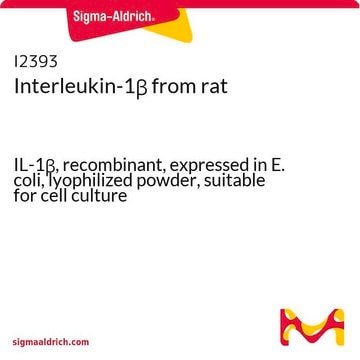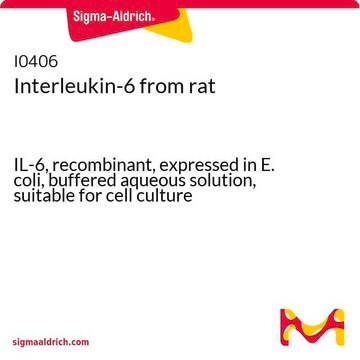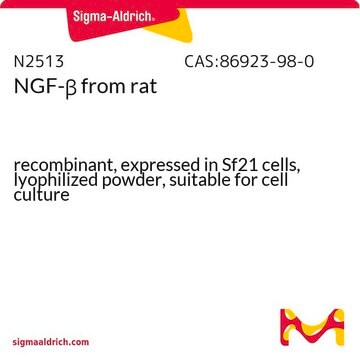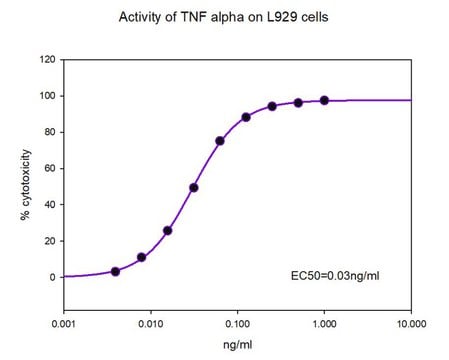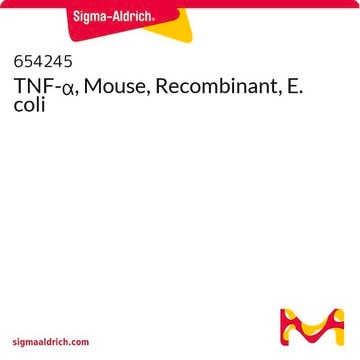T5944
Tumor Necrosis Factor-α from rat
TNF-α, recombinant, expressed in E. coli, powder, suitable for cell culture
Synonyme(s) :
Cachectin, TNF-α
About This Item
Produits recommandés
Source biologique
rat
Niveau de qualité
Produit recombinant
expressed in E. coli
Pureté
≥98% (SDS-PAGE and HPLC)
Forme
powder
Qualité
endotoxin tested
Poids mol.
predicted mol wt ~17 kDa
Conditionnement
pkg of 10 μg
pkg of 50 μg
Conditions de stockage
avoid repeated freeze/thaw cycles
Technique(s)
cell culture | mammalian: suitable
Impuretés
<1 EU/μgtested (LAL test)
Couleur
white
Solubilité
water: soluble
Numéro d'accès UniProt
Température de stockage
−20°C
Informations sur le gène
rat ... Tnf(24835)
Description générale
Application
- To stimulate inducible nitric oxide synthase (iNOS) expression in the macrophages as an indication of M1 macrophage activation
- To study its effect on pancreatic β cell apoptosis
- To evaluate the effect of progesterone on the expression of tumor necrosis factor (TNF)-α in synovial membrane
- As a blocking antigen in the control, for immunohistochemical analysis
Actions biochimiques/physiologiques
Forme physique
Remarque sur l'analyse
Code de la classe de stockage
11 - Combustible Solids
Classe de danger pour l'eau (WGK)
WGK 3
Point d'éclair (°F)
Not applicable
Point d'éclair (°C)
Not applicable
Certificats d'analyse (COA)
Recherchez un Certificats d'analyse (COA) en saisissant le numéro de lot du produit. Les numéros de lot figurent sur l'étiquette du produit après les mots "Lot" ou "Batch".
Déjà en possession de ce produit ?
Retrouvez la documentation relative aux produits que vous avez récemment achetés dans la Bibliothèque de documents.
Les clients ont également consulté
Notre équipe de scientifiques dispose d'une expérience dans tous les secteurs de la recherche, notamment en sciences de la vie, science des matériaux, synthèse chimique, chromatographie, analyse et dans de nombreux autres domaines..
Contacter notre Service technique

